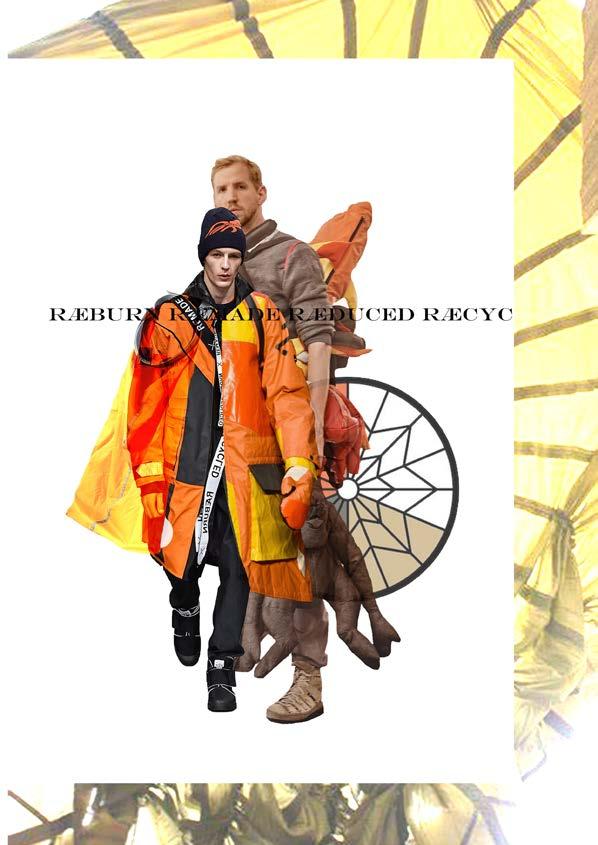
1 minute read
Christopher Raeburn (case study
A key name to mention as a mover and shaker in the sustainable streetwear race most certainly be British fashion designer Christopher Raeburn. Christopher has built his career on uncovering the significance of sustainability within the fashion industry. Christopher reported that the start of his fashion label was a ‘happy accident’, and since he has evolved into one of fashions leading sustainability lights, it is evident that he has been fighting the good his entire career. Along the neighbourhood trail ‘Hackney Life’ in London, Christopher in 2009 set up his own lab to inspire and educate others. Remade, Reduced and Recycled are three underpinning approaches Raeburn uses. Remade: reworking surplus materials, products and artefacts into new functional designs (these items are limited edition). Reduced: all designs produced at the Raeburn lab are carefully considered for their impact on the environment, reducing waste is key and can be achieved by minimising carbon footprint, produce small batches and reworking excess materials. Recycled: recycling pre exciting materials and harnessing green technologies. Christopher Raeburn tackles sustainability holistically, whilst using the ethos mentioned above, he ensures all aspects of production are considered. Sustainability is covered in all areas of Raeburn’s business strategy, the logo (made from vegetable inks), the packaging (wrapped in corn-starch, a bag which is completely compostable), the fabrics (repurposed unexpected and rare materials), even to how Christopher commutes to work (bicycle) all highlight how sustainability is at the heart of the brands DNA. Where there is increasingly rapid pressure for designers to produce collections in a way that does not harm the planet, Christopher is certainly one that reaches the challenge, and produces exactly that.

Advertisement






